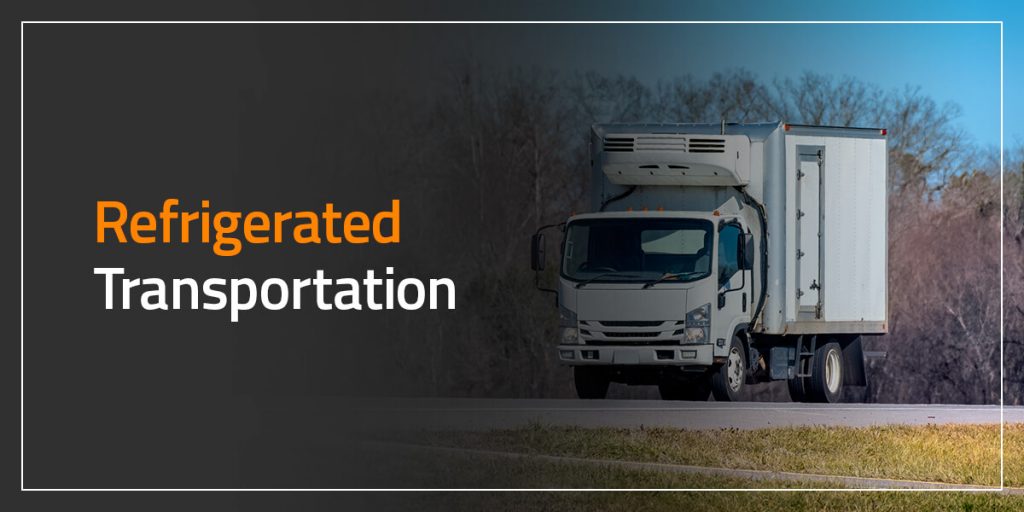Refrigerated transportation allows the movement of fresh fruits and vegetables, pharmaceuticals, flowers and any goods that need to remain frozen, chilled or at a controlled temperature during transit. Specialized trucks are equipped with refrigeration units that guarantee the temperature throughout the entire transportation process.
Transport your perishable pharmaceutical and food products with Central Florida Freezer. Our reliable full distribution services accommodate various business needs and temperature-sensitive product requirements.

What Is Refrigerated Transportation?
Refrigerated transportation is a shipping method that allows companies to move perishable foods and products in a temperature-controlled environment. This process allows for the transportation of perishable goods across long distances while preventing product loss.
The trucks, trailers or cargo containers used in cold transport have a built-in refrigeration system that keeps the food or goods at the correct temperature throughout the entire shipping process. Maintaining consistent, safe temperatures from producer to consumer allows the products to arrive at their destination in the same condition they were in before the shipment.
From monitoring and maintaining ideal temperatures to delivery timing and correct available space, transporting food or pharmaceutical products to their destination involves safety and efficiency regulations to minimize product loss.
Shipping pharmaceuticals across long distances requires extra precautions because of the many government regulations that must be followed for these highly temperature-sensitive products to reach their destiny without compromising their functionality. Other products that rely heavily on chilled and frozen transportation include:
- Meat
- Seafood
- Fresh fruits and vegetables
- Dairy
- Personal care products
Benefits of Refrigerated Courier Services
Refrigerated transportation has many benefits for companies and consumers. This method of transportation is the best solution for businesses looking to move perishable goods from manufacturers to sellers without compromising on quality. The main benefits of choosing cold transport are:
- Accessibility: Refrigerated truck transport gives buyers access to region-specific foods and goods everywhere.
- Protection: Products must safely go from point A to point B and minimize revenue loss.
- Demand fulfillment: The call for fresh products continues to stay high, and refrigeration allows companies to meet this demand efficiently.
Why Choose Our End-to-End Refrigerated Transportation Solutions
At Central Florida Freezer, we accommodate a wide range of needs and inventories. When you hire our refrigerated transportation solutions, you’ll benefit from working with cold storage and distribution experts who will discuss your needs to design cold shipping solutions that control overhead, encourage more precise fulfillment and drive growth for your business.
We work within an expansive resource network and leverage management and distribution tools to help you expand in your market. Some of the other factors that make Central Florida Freezer your best option for refrigerated transportation include:
- Prompt trucking to deliver shipments anywhere
- 15-minute intervals between truck turnarounds
- Seamless cross-docking practices that prevent detention
- Innovative inventory management systems for precision and reduced loss
- Around-the-clock monitoring and security services
Get a Quote for End-to-End Refrigerated Transportation With Central Florida Freezer

From fresh produce and seafood to perishable pharmaceutical products, transport your products safely and timely with Central Florida Freezer. When you work with us, our team will create a detailed distribution plan to improve your transportation logistics and safeguard your temperature-sensitive products throughout shipment.
Central Florida Freezer provides businesses with an end-to-end solution for cold storage, warehouse management and complete distribution services. Get started with our refrigerated truck delivery service today by contacting us online or calling us at 352-365-6969. You can also request a quote for more details.
